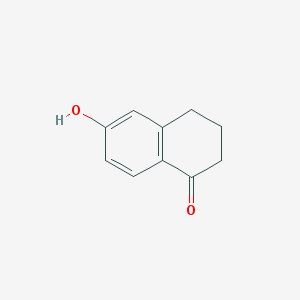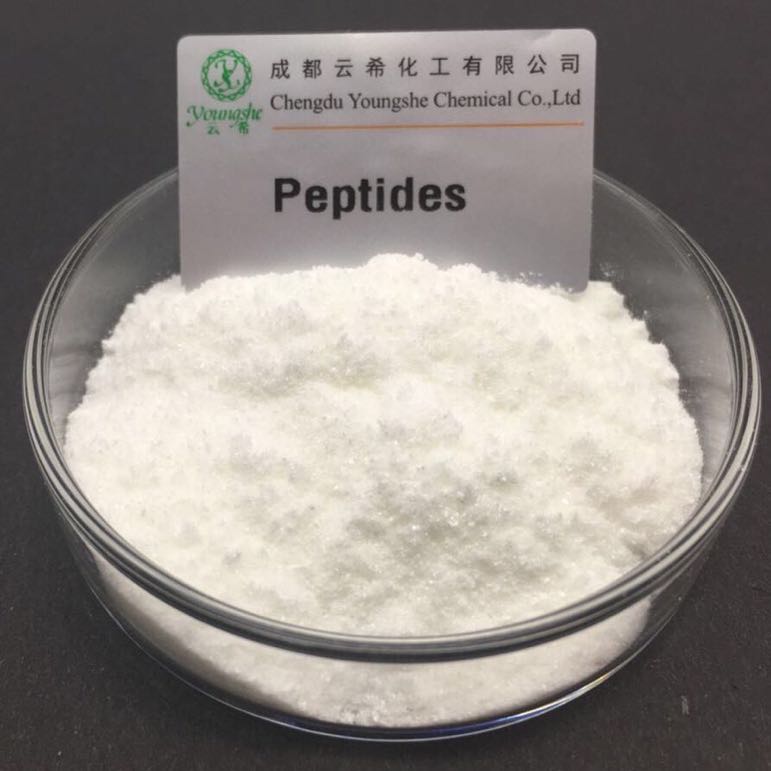-
Categories
-
Pharmaceutical Intermediates
-
Active Pharmaceutical Ingredients
-
Food Additives
- Industrial Coatings
- Agrochemicals
- Dyes and Pigments
- Surfactant
- Flavors and Fragrances
- Chemical Reagents
- Catalyst and Auxiliary
- Natural Products
- Inorganic Chemistry
-
Organic Chemistry
-
Biochemical Engineering
- Analytical Chemistry
- Cosmetic Ingredient
-
Pharmaceutical Intermediates
Promotion
ECHEMI Mall
Wholesale
Weekly Price
Exhibition
News
-
Trade Service
Text . . . RNA interference (RNAi) is a natural defense mechanism against invasion of foreign genes.
RNAi forms, including small interfering RNA (siRNA) and microRNA (miRNA), can be in a sequence-specific manner, by mediatating target mRNA degradation or inhibiting mRNA translation to knock down the expression of targeted genes.
siRNA and miRNA often have different roles in drug practice because of the subtle differences between siRNA and miRNA (a miRNA can affect the expression of several different target genes at the same time), siRNA is often more effective and specific than miRNA triggering.
Figure 1 miRNA (a) and siRNA (b) Working Mechanism Schematos (Source: Trans Signaling and Targeted Therapy) Since the establishment of the RNAi concept in 1998, siRNA therapy has experienced many ups and downs.
2001, Sayda M. Elbashir et al. successfully silenced the expression of a particular gene by introducing chemically synthesized siRNAs into mammalian cells.
this breakthrough led to a wave of research and development, and by 2003 there were a number of companies that had developed RNAi therapy.
unfortunately, the first clinical trial using unmodified siRNA produced immunoasicity-related toxicity and the suspect (uncertain) RNAi effect.
the second wave of clinical trials using systematically administered siRNA nanoparticle preparations, and despite significant progress (e.g., the first evidence that siRNA nanoparticle system administration can produce RNAi effects in the human body), significant dose-limiting toxicity and ineffectiveness have been shown.
the problems exposed in these developments led most pharmaceutical companies to pull out of the RNAi space in the early 2010s.
, however, RNAi therapy is gradually returning to the "center" of drug development as scientists make new breakthroughs in chemical modification and delivery.
2018, the field reached a milestone: the FDA approved the first RNAi therapy (ONPATTRO® for the treatment of nerve damage caused by hereditary transthylioprotein amyloid degeneration (hATTR).
November 2019, the FDA approved the second RNAi therapy GIVLAARI ™ for the treatment of acute hepatic dystrophy (hepatic porphyria, AHP).
siRNA has an innate advantage over small molecules and monoclonal antibody drugs because siRNA achieves its function by pairing with mRNA with Watson-Crick base, while small molecules and monoclonal antibody drugs need to identify complex spatial structures of certain proteins.
many diseases cannot be treated with small molecules and monoclonal antibodies because highly active, affinity and specific molecules for pathogenic proteins cannot be identified.
, in contrast, in theory, siRNA can target any gene of interest, simply selecting the correct nucleotide sequence on the target mRNA.
this advantage makes siRNA shorter in development cycles and a wider range of treatments than small molecules or antibody drugs.
however, despite the promising aspects of siRNA in drug development, multiple barriers in and outside cells limit its wide range of clinical applications.
, for example, unmodified siRNAs have disadvantages such as poor stability, poor pharmacokinetic characteristics, and possible induced off-target effects.
In addition, siRNA's phosphate diester bonds are susceptible to damage to RNases and phosphatase. Once the
enters the cycle through the system administration, endoenzymes or exsotoses throughout the body will quickly degrade siRNA into fragments, preventing the accumulation of complete therapeutic siRNA in the desired tissue.
on the other hand, in theory, siRNA can only function if its antisense chain is paired with the target mRNA's complete base.
However, the RNA-induced silent complex (RISC) can tolerate a small number of mismatched genes, which can lead to unexpected silence in a small number of nucleotide mismatched genes.
in addition, the righteous chain of siRNA may also reduce the expression of other unrelated genes.
finally, unmodified siRNAs may also lead to the activation of Toll-like receptor 3 (TLR3) and adverseeffects to the blood and lymphatic system.
these findings raise a number of concerns about the safety and medicinal nature of siRNA.
researchers have done a lot to investigate various chemical modification patterns and develop different dosing systems to maximize therapeutic effectiveness, reduce or avoid side effects of siRNA. the effects of
a range of modification patterns on the activity, stability, specificity, and biosafety of siRNA therapy have been evaluated both preclinical lying and in clinical settings.
delivery materials based on lipids, lipidoids, polymers, peptides, exosomes, inorganic nanoparticles, etc. have also been investigated.
Source: Signal Transduction and Targeted Therapy June 19, several researchers from the National Nanoscience Center, Guangxi Medical University, and Beijing Polytechnic University published a new review entitled "Therapeutic siRNA: State of the Art" in the journal TransSignalduction and Targeted Therapy, which discusses the detailed development of siRNA modification and delivery technology.
at the same time, this article also provides a historical review of the development of siRNA therapy.
the following reference seduments, excerpted into part of the main points: First, siRNA modification as mentioned earlier, in the early stages of the development of siRNA therapy, many drugs are designed to be based on completely unmodified or slightly modified siRNA to reach the appropriate tissue, and then to silencing the target gene.
these molecules can mediate gene silencing in the body, especially in tissues receiving local drug therapy, such as the eyes.
However, using these completely unmodified or slightly modified siRNAs may not only have limited efficacy, but also potential off-target effects.
, for example, Kleinman and colleagues observed that siRNA therapy bevasiranib (targeted veGFA) and AGN211745 (targetve VEGFR1) for the treatment of age-dependent macular degeneration triggered significant activation of TLR3 and its adapter molecule TRIF, inducing the secretion of interleukin-12 and interferon-gamma.
chemical modification siRNAs, such as replacing 2'-methoxyethyl (2'-MOE) groups with 2'-O-methyl(2'-MOE) groups, and locked nucleic acids, LNA) and non-locking nucleic acid (unlocked nucleic acid, UNA) or glycol nucleic acid (glycol nucleic acid, GNA) replace certain nucleotides siRNA, which effectively inhibits immune stimulation of immune stimulus siRNA-driven innate immune activation, improves activity and specificity, and reduces off-target-induced toxicity (Figure 2).
Figure 2 for chemical modifications and similarstructures modified by siRNA and antisense oligonucleotide (ASO) (Source: Signalsing Trans and Targeted Therapy) Scientists have developed and tested a number of chemical modification patterns in order to increase the effectiveness and reduce its potential toxicity.
the structure of chemical modifications and analogues used in siRNA can be divided into three main categories according to the modification sites in nucleotides: 1) glycemic modification, 2) ribose modification, and 3) base modification, represented in figure 2 in red, purple and blue, respectively.
usually, these modifications are introduced into siRNA at the same time.
for example, ONPATTRO ® used both 2'-OMe and 2'-deoxy-2'-fluoro (2'-F) modifications; Moiety" and an L-DNA cytonucleotide were modified, and inclisiran (ALN-PCssc) was retouched simultaneously with phosphorothioate (PS), 2'-OMe, 2'-F, and 2'-deoxy( Figure 3).
a representative design of the chemical modification of Figure 3 siRNA, including the sequence and modification details of ONPATTRO ®, QPI-1007, GIVLAARI ™, and inclisiran.
(Source: Signal Transduction and Targeted Therapy) II, siRNA delivery system siRNA requires bypassing a number of barriers to gene siRNA to achieve gene sinosis, such as nuclease degradation, short circulation, immune identification in blood circulation, accumulation in target tissue, effective transmembrane transport, and escape from endothelial and lysozyes to cytoplasm.
challenges in nuclease degradation and immunoidentification have been well addressed through the addition of chemical modifications, but some other obstacles still need to be overcome.
in blood circulation, nonspecific binding and renal glomerular filtration block the accumulation of siRNA in the target tissue.
neutral surface charge of nano-agents loaded with siRNA helps to avoid adverse binding in the cycle.
and ligand-siRNA conjugates can transport siRNA to the desired tissues and cells through specific identification and interaction sitcoms between ligands (e.g., carbohydrates, peptides, antibodies, ligands, small molecules, etc.) and surface receptors.
this proactive targeting strategy not only reduces the accumulation of siRNA in unexpected tissues, thereby reducing or avoiding adverse side effects and toxicity, but also enables effective gene silencing at low doses.
Figure 4 Representative siRNA preparations and their pharmacoeutic properties in the clinical development phase . . . a-g is a of seven delivery systems, followed by the lipid nanoparticles (LNPs), DPC ™/EX-1™, TRiM ™, GalNAc-siRNA Conjugates, LODER ™, iExososme Gal, iExSosme Gal, S.C. ™ (Source: Signal.
the molecule is too large to pass through the cell membrane, but small enough to be freely removed by a glomerular.
so once siRNAs leave the blood, they accumulate in the bladder and quickly drain from the body within a few minutes to half an hour, preventing them from accumulating in the target tissue or cells.
wrap siRNA in a vesion or tie it to a specific ligand, effectively avoiding kidney removal and, more importantly, delivering siRNA to the desired tissue or cells.
lipid nanoparticles (LNPs), dynamic polyconjugates (DPC™) and GalNAc-siRNA conjugates can effectively deliver siRNA to liver cells (Figure 4, Figure 5) Figure 5 SiRNA delivery platforms that have been evaluated both preclinical and clinically . . . a wide variety of lipids, lipids, s IRNA conjugates, peptides, polymers, exosomes, tree macromolecules, etc. have been explored and applied to the development of siRNA therapies by biotechnology companies or research institutes (Source: Signal Transand Targeted Therapy) due to relatively high molecular weight (-13-16 kD) and net negative charges that prevent artificial siRNAs from passing through the cell membrane.
therefore, the researchers are trying to determine whether cells can internalize siRNA without a vector.
study concluded that naked siRNAs can only be absorbed by a small number of cells, such as retinal nerve cells (RGCs) and neurons.
, the researchers are also working to identify a variety of vectors for efficient cross-membrane transmission.
cational cell penetration peptide (CPPs) became the first choice for early research.
the tail of CPPs usually has a fine-rich series that can form a double-tooth bond by interacting with negative phosphates, sulfates, and pholates on the cell surface by the argon salt group.
this interaction causes membrane holes to form, causing cells to absorb siRNA. Another strategy for
cross-film transport is to neutralize the negative charge of siRNA with a positively charged lipid or polymer, making it easier for siRNA to bind to the membrane and easier to internalize by adsorption of cytodrinks.
the last step, siRNAs must effectively escape from the endothelial and lysozyme to the cytoplasm.
most non-viral vectors mainly through the internal swallowing channel into the cell, the carrier after internal swallowing will be assembled with the biofilm components into an endosome, and then through a variety of mechanisms to develop into lysosomes, and the lysosome has a large number of degradation enzymes, will make its contained gene drugs degradation and failure, therefore, an effective non-viral vector should be able to promote the rapid escape of genetic drugs from the endosome.
many delivery systems use a pH sensitive unit to respond to pH changes in the endothelial and lysozymes, where they absorb H-plus and present a positive charge on the surface.
then, the osmotic pressure of the endothelial or lysozyme increases, causing Cl-and-H2O to flow internally.







